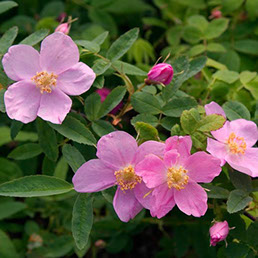
 When he started working in 2010 on the old growth cedar log that stands before you, James Madison took a lot of time trying to feel the spirit of the wood and to visualize what would emerge from it. The driftwood log had been found floating in Port Gardner Bay, along the Tulalip Tribes shoreline just north of Everett. After some reflection, Madison saw a large hand coming forth from the earth, similar to the tribal welcoming gesture among the Snohomish people. Madison brought forth the fingers of the hand, but left much of the log untouched to honor the spirit of the old growth forests that once blanketed the region. Eventually, Madison was able to coax the face of “Mother Earth” from the wood. An important tribal story tells of the raven stealing the sun to plunge the world into darkness, unless several brave youth are able to heroically rescue it. It is the duty of “Father Moon,” portrayed as a smaller face, to maintain the alternating cycle of light and dark throughout all time. Note the pursed lips of “Mother Earth,” representing wind and rain as revealed in another many-layered legend.
When he started working in 2010 on the old growth cedar log that stands before you, James Madison took a lot of time trying to feel the spirit of the wood and to visualize what would emerge from it. The driftwood log had been found floating in Port Gardner Bay, along the Tulalip Tribes shoreline just north of Everett. After some reflection, Madison saw a large hand coming forth from the earth, similar to the tribal welcoming gesture among the Snohomish people. Madison brought forth the fingers of the hand, but left much of the log untouched to honor the spirit of the old growth forests that once blanketed the region. Eventually, Madison was able to coax the face of “Mother Earth” from the wood. An important tribal story tells of the raven stealing the sun to plunge the world into darkness, unless several brave youth are able to heroically rescue it. It is the duty of “Father Moon,” portrayed as a smaller face, to maintain the alternating cycle of light and dark throughout all time. Note the pursed lips of “Mother Earth,” representing wind and rain as revealed in another many-layered legend.
James Madison began carving when he was 8 years old, learning primarily from his grandfather, Frank Madison, a renowned traditional carver. An uncle, Steve Madison, was also an early teacher, and James learned abstract painting and sculpting from his father, Richard Madison. Madison immersed himself in the meanings and methods of traditional carving before moving out to earn bachelor degrees in fine arts from both the University of Washington and the Pratt School.
While James Madison remains a master wood carver, he also works now in a variety of media, including glass, bronze, and stainless steel—remember the steel cube at the beginning of this walking tour. One of Madison's major works is a 24-foot story pole in the hotel lobby at the Tulalip Resort and Casino. His growing body of work also includes pieces in the Tulalip's Hibulb Cultural Center, the Tulalip Health Clinic, Providence Hospital in Everett, the Burke Museum on the University of Washington campus, and several other municipal sites and art galleries throughout Puget Sound. He has described his method as trying to "create art with an open mind in the sense that I am always thinking of new ways to add a modern twist to a traditional piece. This allows for me to help to keep my culture alive. As we move into the future, so do the teachings of my ancestors."
Copyright 2015, Mukilteo Walking Tour. All rights reserved.